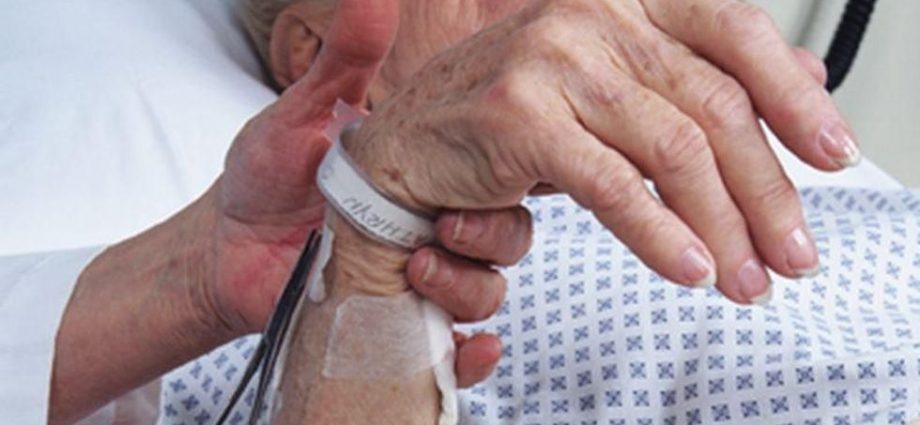THURSDAY, Sept. 2, 2021 (HealthDay News) — The COVID-19 pandemic has spurred a resurgence in other infections that strike hospitalized patients, a U.S. government study finds.
The study, by the U.S. Centers for Disease Control and Prevention, highlights the broad toll the pandemic has taken. It found that rates of several types of hospital-acquired infections rose after the pandemic reached U.S. shores in 2020.
More hospital patients suffered potentially deadly infections related to medical devices, including ventilators and tubes placed in blood vessels compared to the same period in 2019. There was a similar rise in antibiotic-resistant staph infections, which can infiltrate the bloodstream and lungs.
The trend is disconcerting, in part, because U.S. hospitals had been making steady progress in preventing those infections before the pandemic.
“What we’ve learned during this pandemic is that the impact of COVID-19 is far-reaching,” said Dr. Arjun Srinivasan, associate director of the CDC’s health care-associated infection prevention programs.
The unfortunate fact, he said, is that COVID-19 created a “perfect storm” of circumstances that fed the increase in hospital-acquired infections.
There was the sheer number of patients flooding many hospitals — people who were very ill and often required intensive care. Plus, Srinivasan said, those patients commonly had preexisting medical conditions and often needed to stay on ventilators and other medical devices for prolonged periods — all of which raise the risk of infections.
Add to that the challenges faced by health care providers.
Earlier in the pandemic, Srinivasan said, “we didn’t have enough gowns, we didn’t have enough masks, we didn’t have enough respirators.”
As a result, protective equipment meant to be thrown away after one use was sometimes being reused. And, Srinivasan said, health care workers were falling ill or needing to quarantine — which fed staffing shortages and added to providers’ exhaustion.
“This is, in no way, saying that health care workers failed to do their job,” Srinivasan stressed. “This was a failure of the system.”
The findings — published Sept. 2 in the journal Infection Control & Hospital Epidemiology — are based on data from a national surveillance system that tracks health care-linked infections. CDC epidemiologist Lindsey Weiner-Lastinger led the study.
Researchers found that in the early part of 2020, those infections were generally declining compared to the same period in 2019. That changed with the pandemic.
The biggest increase was in blood infections related to central lines, which are catheters placed into large arteries to deliver medications or fluids. Those infections were up by about 47% in the latter half of 2020.
Infections related to ventilators, urinary catheters and antibiotic-resistant Staphylococcus aureus bacteria were all up as well.
“This isn’t surprising to those of us on the ground,” said Dr. Cornelius Clancy, a professor of medicine at the University of Pittsburgh. “The national data reflect what we’ve seen.”
He pointed to the general strain on hospital systems, and the “inordinate resources” that COVID care demanded, as factors. Some “bread-and-butter” practices that prevent health care-associated infections, Clancy said, could not get the same attention they do during normal times.
“This is another example of how you can’t separate COVID from everything else that goes on in health care,” said Clancy, who is also with the Infectious Diseases Society of America.
COVID affects not only the people who are sickened with it, he said, but the wider health care system.
That is not to say people should fear going to the hospital, both Clancy and Srinivasan emphasized.
“People certainly need to seek any care they need,” Clancy said.
And even in the midst of new COVID surges at some U.S. hospitals, there are reasons to expect that the risks of hospital-acquired infections might be less, versus last year.
For one, Srinivasan said, hospitals are more aware of the issue now. Health care workers are also more experienced in managing COVID patients, and more protected from infection through vaccination.
As for the general public, the study underscores the importance of getting vaccinated to cut the risk of falling seriously ill with COVID.
“One of the best ways to prevent health care-associated infections is through vaccination,” Srinivasan said.
“Even with the delta variant,” he added, “the vaccines are tremendously effective at preventing hospitalization.”
Clancy agreed. “The data on vaccination are incontrovertible,” he said.
More information
The U.S. Centers for Disease Control and Prevention has advice for patients on lowering their risk of health care-associated infections.
SOURCES: Arjun Srinivasan, MD, associate director, healthcare-associated infection prevention programs, U.S. Centers for Disease Control and Prevention, Atlanta; Cornelius J. Clancy, MD, professor, medicine, University of Pittsburgh School of Medicine; Infection Control & Hospital Epidemiology, online, Sept. 2, 2021
Copyright © 2025 HealthDay. All rights reserved.

